Quick wins – ranking position vs. spend vs. revenue
The general goal here is to find keywords that you’re overspending on, that generate little to no revenue, and where you already have strong visibility in organic search. It’s not as black and white as simply turning off keywords where you already rank first in organic, but these terms certainly lend themselves to testing a dialled back budget and a reduced ad position on the page.
The general process is:
- Export your top PPC keywords by cost (exact / search query report)
- Combine the above with your organic ranking position (via AWR or your ranking tool of choice)
- Add in conversion / revenue data
- Pivot by spend vs. revenue
- Filter down to keywords where you rank first for organic
What you end up with is something a little like this:
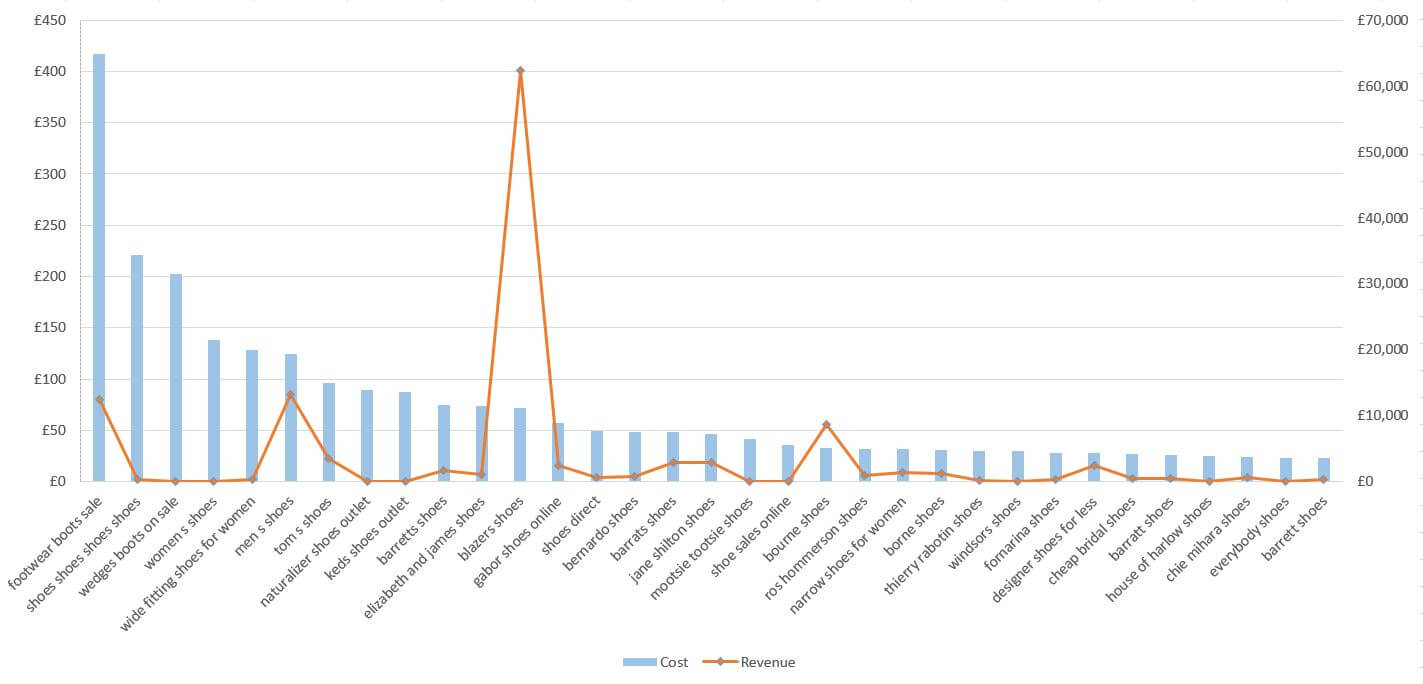
As you can see – it’s super easy to cherry pick off terms that are costing a lot, generating little revenue, and where a stable high ranking exists in organic.
A clear action point here is to dial back spend in a controlled manner for these terms (or test switching off entirely if you’re feeling brave), and monitor the impact on revenue through both your PPC channel and organic.
What you’re really looking for is stable revenue (combined PPC and organic), with a reduced overall cost per acquisition.
Prioritising unprofitable keywords for SEO
If you’re genuinely looking for the best opportunities for SEO, then your PPC profitability (or lack of) should feature within your keyword research.
Now, any keyword that’s unprofitable could be caused by high competition. So, the likelihood is that it’s not going to be the easiest term to rank for in organic. But, as a long-term goal this consideration should certainly feature, but you will need to weigh up the spend (in cash or time) to rank organically for that term instead.
Lack of profit isn’t always down to high competition though – there are of course other factors that could be playing a part which lead to far quicker wins. For example, you might find that due to low margins a certain category of product is simply not viable to target via PPC. There’s an SEO priority for you right there.
Obvious stuff really.
CTR considerations – Ad extensions vs. rich snippets
With search results and ads alike getting richer all the time, there are now a number of considerations that might influence a user’s decision to divert their precious click from an ad to an organic listing, or vice versa.
Take a look at the SERP below for ‘running shoes’. From the paid side of things you’ve got a visual feast including image shopping results, star ratings, sitelinks and more. All of which push the organic listings below the fold:
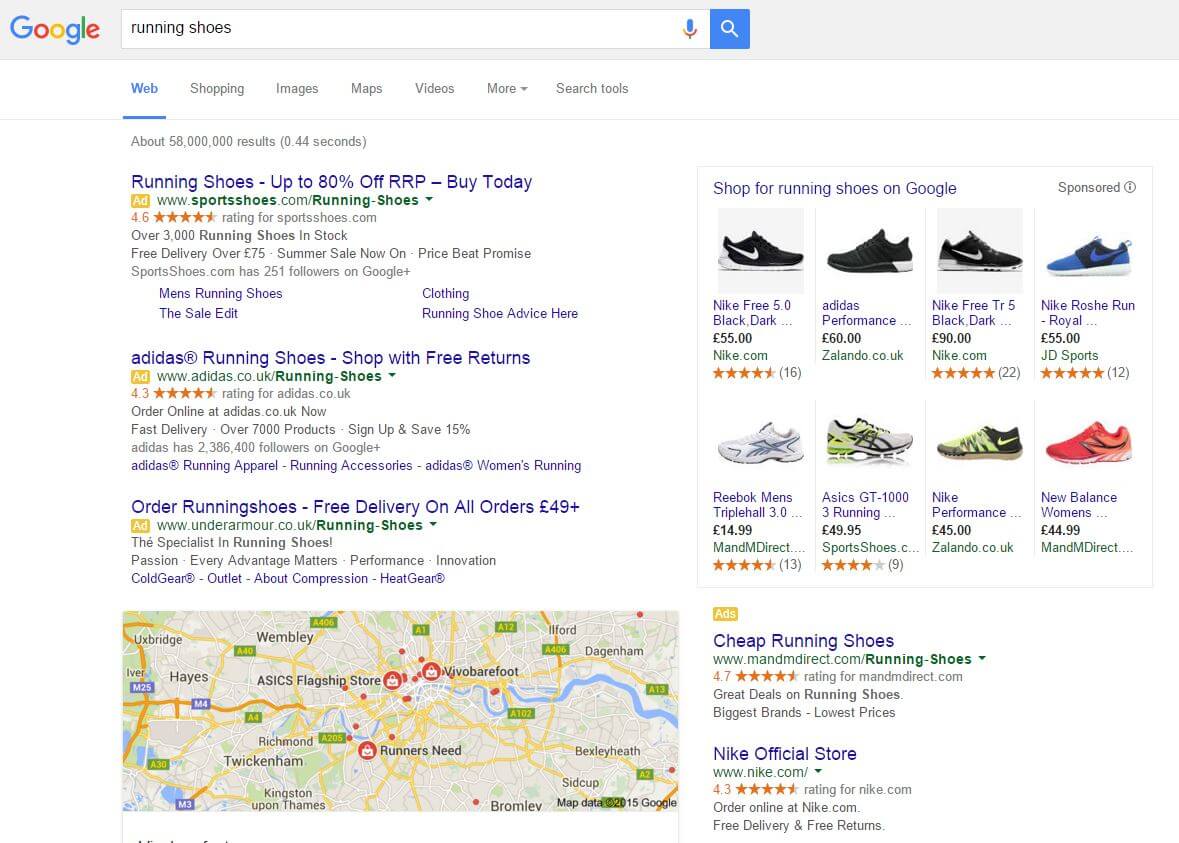
Now take a look at the same result on mobile – it’s a similar story, with plenty of rich ad features potentially distracting me from clicking an organic listing:
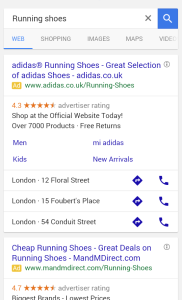
This should absolutely be impacting your strategy for SEO. If you’re competing in a space where the organic results tend to be dry in comparison to ads, then you’ve got to be taking those features as a steer for actions such as mark-up and inclusions within your meta description.
If you’re wondering about how to get that implemented, then you can’t go too far wrong by reading Dan’s epic guide on Rich Snippets and Schema.org.
If the paid ads tend you’re competing against heavily feature pricing information, then it’s super easy to mark up your pricing to generate snippets. Do 90% of ads on the page feature call extensions? Make sure you’ve at least got a number in your meta description. Do most ads feature validation via star ratings? Make sure you’ve implemented review mark up.
It’s not that you should be copying everything that you see in ads over to organic, but you definitely should be looking at the SERPs holistically and thinking carefully about how to maximise your chances of generating organic clicks.
Although this is a constantly moving landscape and the data is always going to be changing due to things such as increase in ad extensions / other changes in the SERPs, AWRs CTR study is an awesome resource for a high level view on how ads impact organic.
You can clearly see the impact ads are having on organic click through rates:
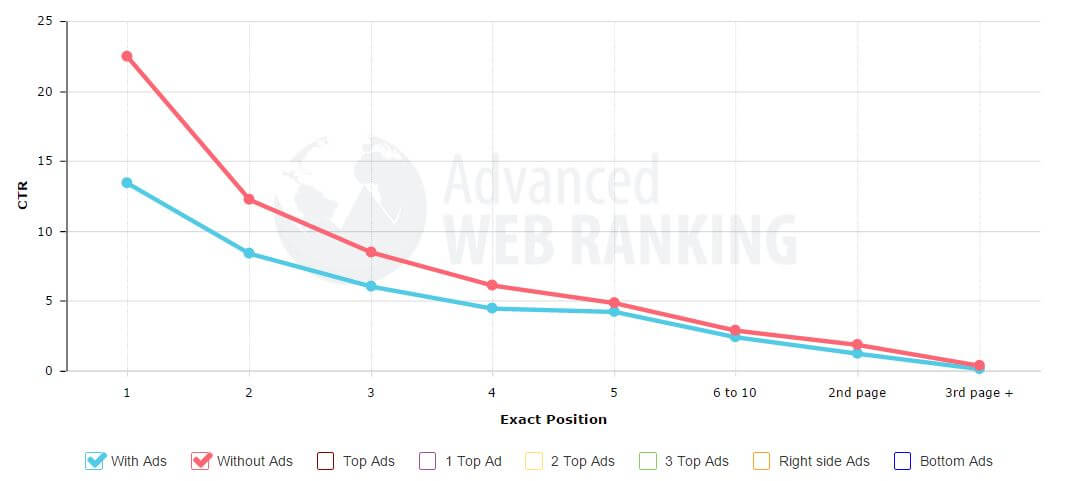
But take a look at what happens when you take away the top positioned ads, leaving the only paid listings located on the right-hand side:
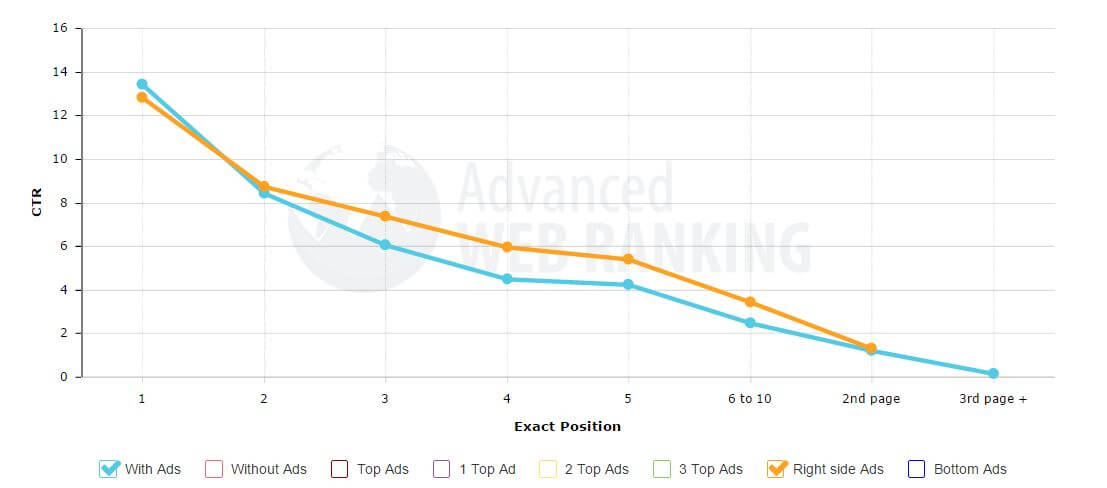
Organic CTR is barely impacted for the top two results, and is actually positively improved for results in position 3 through to 10. Well worth considering when experimenting with adjusting bids for terms where you rank in the top 2 organic positions.
There’s a ton of other data you can pivot for insights into your SEO campaigns. If you’ve got any special tricks, I’d love to hear from you in the comments!
